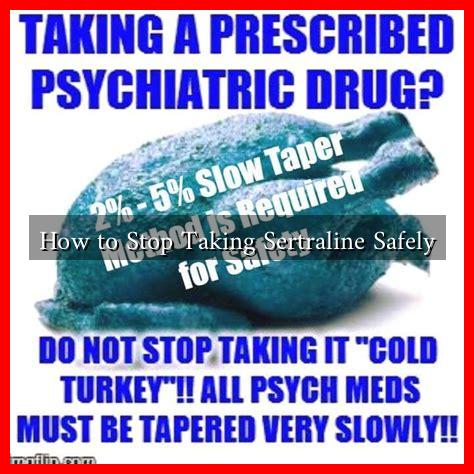-
Table of Contents
How to Stop Taking Sertraline Safely
Sertraline, a selective serotonin reuptake inhibitor (SSRI), is commonly prescribed for conditions such as depression, anxiety, and obsessive-compulsive disorder. While it can be effective in managing symptoms, there may come a time when you and your healthcare provider decide that it’s appropriate to discontinue the medication. Stopping sertraline safely is crucial to minimize withdrawal symptoms and ensure a smooth transition. This article will guide you through the process of tapering off sertraline safely.
Understanding Sertraline and Its Effects
Sertraline works by increasing the levels of serotonin in the brain, which can help improve mood and reduce anxiety. However, discontinuing sertraline can lead to withdrawal symptoms, often referred to as “discontinuation syndrome.” These symptoms can include:
- Dizziness
- Nausea
- Fatigue
- Insomnia
- Flu-like symptoms
- Electric shock sensations
According to a study published in the Journal of Clinical Psychiatry, approximately 20% of patients experience withdrawal symptoms when discontinuing SSRIs. Therefore, it is essential to approach the process with caution.
Consulting Your Healthcare Provider
The first step in stopping sertraline safely is to consult your healthcare provider. They can assess your current mental health status and determine whether discontinuation is appropriate. Factors to consider include:
- Your current dosage
- Duration of use
- Underlying mental health conditions
- Previous experiences with medication discontinuation
Your provider may suggest a tapering schedule, which involves gradually reducing your dosage over time rather than stopping abruptly. This method can help minimize withdrawal symptoms and allow your body to adjust to the changes.
Creating a Tapering Plan
A tapering plan is a personalized schedule that outlines how you will reduce your sertraline dosage. Here are some common strategies:
- Gradual Reduction: Decrease your dosage by a small amount (e.g., 25-50 mg) every few weeks.
- Alternate Days: Take your medication every other day for a period before stopping completely.
- Switching Formulations: If you are on a higher dose, your doctor may switch you to a lower dose formulation to facilitate tapering.
For example, if you are taking 100 mg of sertraline, your doctor might suggest reducing the dose to 75 mg for a few weeks, then to 50 mg, and so on. This gradual approach can help your body adjust and reduce the risk of withdrawal symptoms.
Monitoring Your Symptoms
As you taper off sertraline, it’s essential to monitor your mental and physical health closely. Keep a journal to track any symptoms you experience, including:
- Mood changes
- Physical symptoms (e.g., headaches, nausea)
- Sleep patterns
- Any return of anxiety or depression symptoms
Regular check-ins with your healthcare provider during this process can help address any concerns and make adjustments to your tapering plan if necessary.
Utilizing Support Systems
Discontinuing medication can be challenging, and having a support system in place can make a significant difference. Consider the following:
- Therapy: Engaging in therapy can provide coping strategies and emotional support.
- Support Groups: Connecting with others who have gone through similar experiences can be beneficial.
- Family and Friends: Inform your loved ones about your plan so they can offer support and understanding.
Conclusion
Stopping sertraline safely requires careful planning and support. By consulting with your healthcare provider, creating a tapering plan, monitoring your symptoms, and utilizing support systems, you can minimize withdrawal symptoms and ensure a smoother transition. Remember, every individual’s experience is unique, and it’s essential to prioritize your mental health throughout this process. If you experience severe withdrawal symptoms or a return of mental health issues, reach out to your healthcare provider immediately for guidance.
For more information on managing medication discontinuation, you can visit the National Alliance on Mental Illness (NAMI) website.

